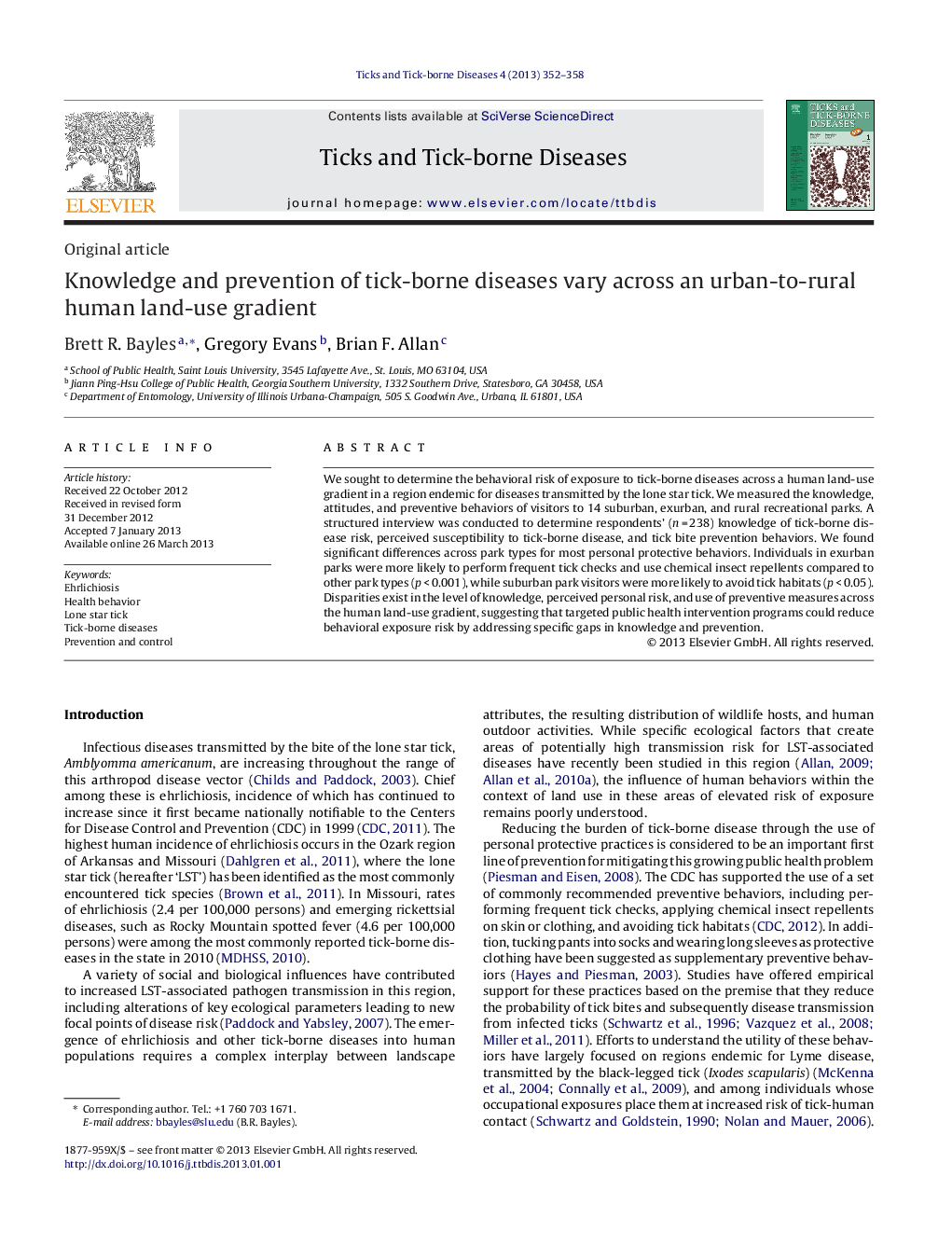| Article ID | Journal | Published Year | Pages | File Type |
|---|---|---|---|---|
| 2474110 | Ticks and Tick-borne Diseases | 2013 | 7 Pages |
We sought to determine the behavioral risk of exposure to tick-borne diseases across a human land-use gradient in a region endemic for diseases transmitted by the lone star tick. We measured the knowledge, attitudes, and preventive behaviors of visitors to 14 suburban, exurban, and rural recreational parks. A structured interview was conducted to determine respondents’ (n = 238) knowledge of tick-borne disease risk, perceived susceptibility to tick-borne disease, and tick bite prevention behaviors. We found significant differences across park types for most personal protective behaviors. Individuals in exurban parks were more likely to perform frequent tick checks and use chemical insect repellents compared to other park types (p < 0.001), while suburban park visitors were more likely to avoid tick habitats (p < 0.05). Disparities exist in the level of knowledge, perceived personal risk, and use of preventive measures across the human land-use gradient, suggesting that targeted public health intervention programs could reduce behavioral exposure risk by addressing specific gaps in knowledge and prevention.
